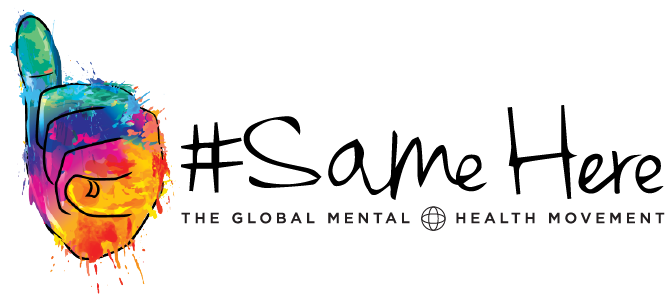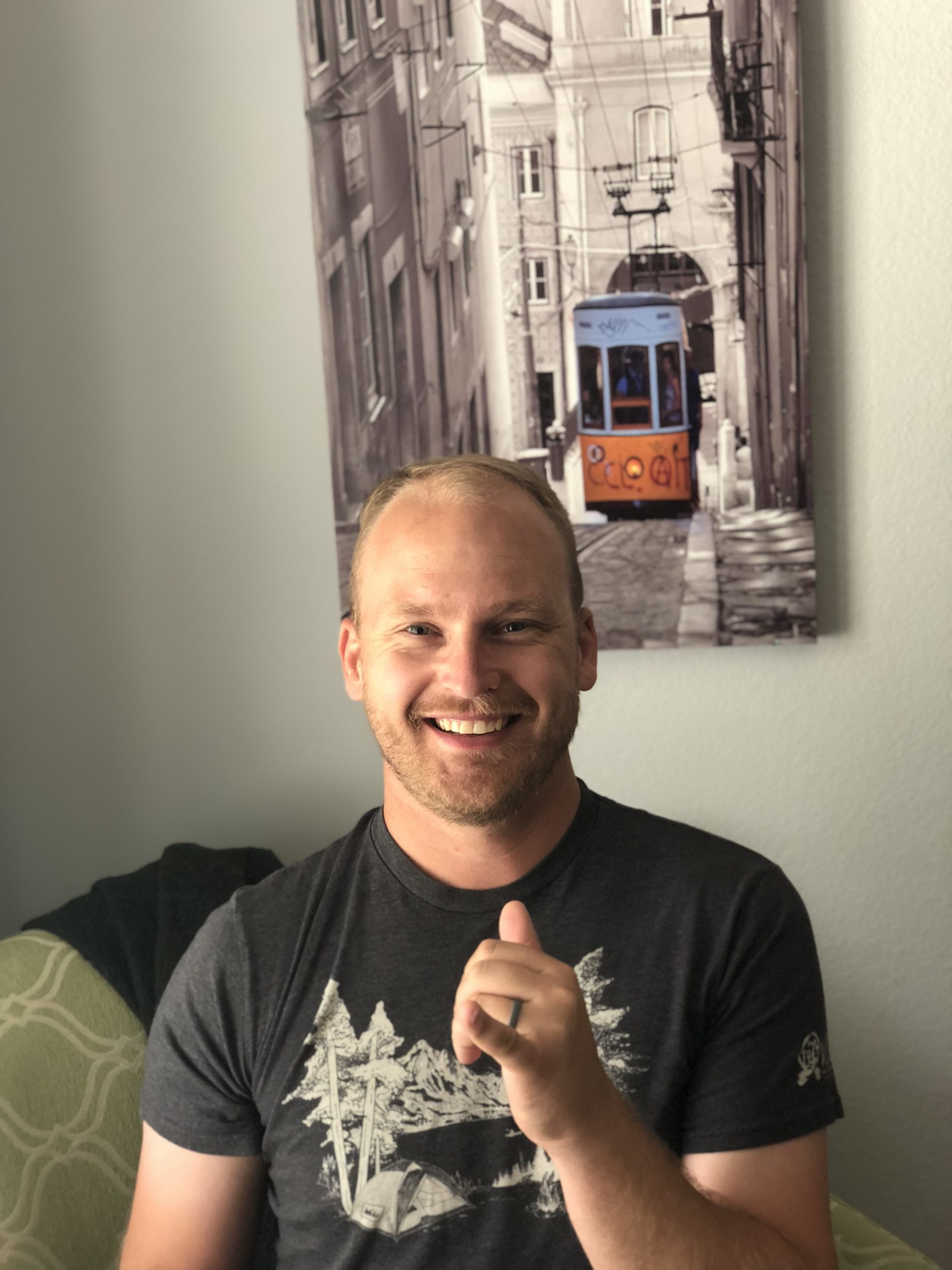Today’s #SameHere Hero: Justin Kruger. I was introduced by a mutual friend, to Justin, and his story wowed me. He had everything in the world he wanted at a young stage in his professional career. Why? Because when he was younger, it appeared to him, outwardly, like the happy people were the ones with many “things” or “stuff” as he calls it. So, to work on his own unhappiness, he thought, the way to get there was to compile his own “stuff.” Unfortunately, he learned the hard way that “stuff” doesn’t bring us true happiness.
By chance, with nothing else exciting him, he volunteered at an event…and by volunteering, and giving back to others, he found what TRULY makes people happy. With this newfound knowledge, he began volunteering more, and even decided to pay it forward multiple times over, by starting his own organization: “Project Helping.” Justin knows that just like TSRR Practices, giving back to others is another powerful way to improve and maintain your MH. I’m so struck by his story and passion, that not only will Justin be joining the #SameHere Advocacy Alliance as an individual, but we will be starting up a whole new Alliance subcategory for #SameHere Organizations/Non-Profits and Project Helping will be the first member. Thank you for sharing your story, Justin!
“Looking back, I first started to struggle when I was in 7th grade. I grew up in a small town – 900 people small. The understanding of small towns is that ‘everyone knows everything about everyone.’ What that really means is, ‘no one really knows anything about anyone.’ That is to say that I never knew a single person who was specifically diagnosed with a mental wellness issue. I didn’t know it was a thing. I just thought this was how I was and how I was going to be.
So I struggled, silently, not knowing that I could get help, or even that getting help was a thing. The next 15+ years would be spent not talking about my mental health and not doing anything about it. When I looked at people who I perceived to be happy, they all seemed to have one thing in common, they had cool ‘stuff.’
Naturally, I set out to get cool ‘stuff.’ I made my decisions about where to go to school, what to study, and what to spend my time on, based on the goal of making as much money as possible.
I know what you’re thinking, and you’re right, this is not going to end well. I tried to fill the feeling of emptiness, isolation, and worthlessness with stuff, stuff, and stuff. I hoped the stuff, the house, the nice car, the trips would fill the void my mental health issues created.
It. Did. Not. Work.
The more stuff I got, the worse I felt, and the worse I felt, the more stuff I got. You get it…
I was in my late 20’s, making a ton of money, had an incredibly successful, highly decorated career, and I was miserable. Every day was a struggle. I had no sense of purpose, no direction (besides getting more stuff), and no plan to make it better. It was a race against myself that I was destined to lose.
Then it all came crashing down around me. I was on the road in Western Kansas one day, late in the evening. I was still hours from my hotel. Then it hit me, like a meteor to my consciences, I couldn’t keep on like this. I wanted to die, right then and there. I wanted the pain, the isolation, and the fear to go away and that seemed like the only possible way for that to happen. I pulled the car over. I sat, silent, for I don’t know how long, trying to decide how – if – I could continue. Everything was silent. I can’t tell you what was around me, if the radio was on, or how long I was there. I broke.
After some time, I decided to continue on to my hotel, in hopes that some clarity would come with time. It didn’t. I was sleepwalking through the next week or so, completely lost, and more hopeless and directionless than before.
I decided I would try to get help. I called a therapist – one close to my house. I had no idea what I should be doing, asking, or expecting.
That started a journey of treatments, medications, and frustration – and none of it seemed to be helping.
At a point when I was at my worst, I was invited to volunteer. I had no expectations for the experiences outside of the fact that I was feeling alone and maybe this would be a good distraction. It proved to be much more than that. That day we were building garden beds for an underserved middle school in Denver. These gardens would be a place for them to grow food and learn about sustainable gardening.
Within 30 minutes of being there, I was overwhelmed with a sense of purpose, hope, and excitement. All of these had been pretty foreign to me over the past 15 years. Immediately I knew that this was what I should be doing with my time. I started to volunteer everywhere, anywhere, and any time that I could. The more I volunteered, the better I felt. The better I felt, the more I was inspired by the amazing power of volunteerism to improve mental wellness.
However, I was feeling a new frustration in the process. The act of finding and signing up for volunteer opportunities was proving to be a major hurdle. The one thing I’d found to help me was also really challenging to continue doing. This is what inspired me to start my organization, Project Helping. I wanted to create a way for people to work on their mental wellness through volunteerism, but I knew volunteerism could be easier.
That’s exactly what we do at Project Helping. We create meaningful, social, and accessible volunteer experiences so anyone can use volunteering to build and improve their mental wellness.
I was terrified to start Project Helping because I knew I would have to share my #SameHere story. It was the single biggest hurdle to overcome. But, the more I’ve shared my story, the more I’ve seen an encouraging trend. Every single person I’ve spoken to has, in turn, shared their story, or of the story of someone they know, who has been impacted by mental health.
They key is not just telling people it’s okay to talk about it. The key is giving people a platform to do the things they need to do to build their own mental wellness to the point where they are empowered to share their story. We need to create the happy ending to complete their story so they can tell it.”
It’s tragically ironic that on World Mental Health Day we are living through a set of global events making our world anything but mentally healthy


